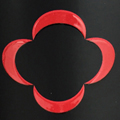Quinta do Portal
by
Terry Sullivan
 Summary: Our bus ride on the narrow, winding roads through the Douro on way to Quinta do Portal was slow at times, almost an amble. However, this ride was an opportunity to take in the stunning beauty of the countryside as well as work on one’s photography skills taking photos through glass. We arrived at the winery and were warming greeted by winemaking Paulo Coutinho who gave an extensive tour and tasting. Later we took our bus a short distance to the restaurant run by the winery.
Summary: Our bus ride on the narrow, winding roads through the Douro on way to Quinta do Portal was slow at times, almost an amble. However, this ride was an opportunity to take in the stunning beauty of the countryside as well as work on one’s photography skills taking photos through glass. We arrived at the winery and were warming greeted by winemaking Paulo Coutinho who gave an extensive tour and tasting. Later we took our bus a short distance to the restaurant run by the winery.
Shortly after getting off the bus, we entered the winery. Even though it was March, hanging from a metal grid between grape crates was a bunch of shriveled grapes. We tasted the grapes noting their sweetness. During the stroll through the processing area, we learned that this family-owned winery has been crafting port since the end of the 19th century. A major rebuilding and modernization took place beginning in 2006. Gravity flow is used often during the winemaking process. Paulo commented, “The winery looks like a factory, but it is more than a factory; this is my nursery.”
 Paulo’s challenge as a winemaker is to have fun and transmit the potential of grapes from the vineyard into the bottle of finished wine. To emphasize this, he spoke about the verticle press and how to change it after the fermentation process. On years with insufficient ripeness of the grapes, he can make the difference with the philosophy of using gravity flow and that press.
Paulo’s challenge as a winemaker is to have fun and transmit the potential of grapes from the vineyard into the bottle of finished wine. To emphasize this, he spoke about the verticle press and how to change it after the fermentation process. On years with insufficient ripeness of the grapes, he can make the difference with the philosophy of using gravity flow and that press.
Paulo was born into a wine family. As a youth he would step on grapes in the family’s stone lagar. At the age of 16, Paulo was harvesting grapes for the port producer The House of Sanderman. Ever since that early harvest experience, Paulo has continued to harvest grapes every September. He is very attached to his village Celeirós do Douro, and becoming a winemaker was a reality of growing up in this beautiful part of the Douro.
 Reflection is part of being a port producer. When Paulo opens a bottle of port he made 15 or more years ago, he thinks about the processes he used at that time and the aromas and tastes that he experiences now. Over the years, he has gained many insights into the biological and natural processes of winemaking.
Reflection is part of being a port producer. When Paulo opens a bottle of port he made 15 or more years ago, he thinks about the processes he used at that time and the aromas and tastes that he experiences now. Over the years, he has gained many insights into the biological and natural processes of winemaking.
Via email, I asked Paulo to what he contributes his winemaking success. “I am natural from this little village. I know the people from here, this soil, landscape, all around here is familiar for me. I grew up here. I have my own vineyard in the village, where I make my own experiments. The vineyard is certified bio at the moment.
“I learn to respect nature and try not to process grapes, but to bottle them. I had a father that helped me to grow as a human being, I had a boss that helped me to grow as a professional. I have an incredible family, wife and two kids that are my emotional support. I like my job. I know that I cannot make wine just for my friends, but I plan to have sufficient friends for all the wine I make.”
Our tour group was large with over thirty people, many of who were winemakers and wine growers. We were split in the production area. Paulo took half the group at a time up a stairways to the second floor to view the stainless steel lagars. We saw the tops of stainless steel vats, one of which was open to view the vats from a grid placed over the opening. While on the bottom floor of this area we walked around observing these vats from beneath them. Our first still wine tasting took place underneath the vats.



 Our tour proceeded into several other rooms. One had large wood vats as well as oak barrels. Along a hallway lined with oak barrels, there were port bottles attached to the wall. The bottles showed the changes in color of both red and whites as they age through the years. You can observe the color changes over the decades. After many decades, the colors of a red port and white port are similar.
Our tour proceeded into several other rooms. One had large wood vats as well as oak barrels. Along a hallway lined with oak barrels, there were port bottles attached to the wall. The bottles showed the changes in color of both red and whites as they age through the years. You can observe the color changes over the decades. After many decades, the colors of a red port and white port are similar.
In the oak barrel room, we had another tasting. Paulo had our group sign a barrel head. We tasted several more wines in this room along with ports. After the tour, we took the bus the short distance to the winery’s restaurant where we had a wonderful meal, paired with Quinta do Portal wines.
Wines and Ports
We tasted two white wines while under the ten ton vats. The 2015 Viosinho, Douro DOC had a light yellow color and 13% alcohol. The wine was made from Viosinho grapes. Citrus, mainly grapefruit and mineral were noticed on the aroma and taste. The finish was very crisp and refreshing. The 2015 Malvasia Fina, Douro DOC was also a light yellow color with 13% alcohol. This wine also offered citrus on the aroma and taste. There were some mineral notes on the crisp finish.
The 2016 Tinta Barroca, Douro DOC was made with Tinta Barroca red grapes. The 15.5% alcohol wine had a dark ruby color. The aroma was reminiscent of a black fruit salad. The taste had a silky mouthfeel with cherry and plum. The full-bodied wine had medium tannins. The finish was very fruity.
 We also tasted a few ports. We learned that ports should be chilled even during winter. The Ten Year Old Aged White Port was a bronze color and had 20% alcohol. Jammy dried fruits were noticed on the aroma. The taste included orange blossoms, dried apricots and golden raisins. There was some sweetness but not overly sweet. The port was delicious. We also sampled the Ten Year Old Aged Tawny Port. This port had a dark amber color and was also 20% alcohol. This port offered dried red cherries, golden raisins and dried black fruits.
We also tasted a few ports. We learned that ports should be chilled even during winter. The Ten Year Old Aged White Port was a bronze color and had 20% alcohol. Jammy dried fruits were noticed on the aroma. The taste included orange blossoms, dried apricots and golden raisins. There was some sweetness but not overly sweet. The port was delicious. We also sampled the Ten Year Old Aged Tawny Port. This port had a dark amber color and was also 20% alcohol. This port offered dried red cherries, golden raisins and dried black fruits.
We sampled two vintage ports, one at the winery and one at the restaurant. The 2014 Vintage Port had an opaque dark purple color. The aroma offered dried fruits while the taste included dried cherries, raisins and dried blueberries. The wine was slightly sweet. The finish was fruity and delicious.
At the restaurant we had a special demonstration of the opening of a 1999 Vintage Port with an iron tong. The tool with a circular head was placed in a fire to heat. Then the circular head of this tool was placed along the neck of the bottle about an inch from the top. The tong was held in place, turned and held in place. After removing the tong, water was poured along the area. We heard a faint crack. Using a cloth, the top of the neck was grabbed and slight pressure was applied . More water was added to rinse away any broken glass particles. The the top of the bottle’s neck was twisted off. It was removed with the cork in it. Paulo mentioned that this method of opening a bottle is very old. He also told our group to think about what we liked better; sabering a bottle of champagne or this method of removing a cork. The 1999 Vintage Port was a ruby color with a brown hue. It too offered dried fruits on the aroma and taste.
Our visit to Quita do Portal was magical. The winery, winemaker and a fabulous lunch in the restaurant provided wonderful experiences.
Quinta do Portal
EN 323
5060-020 Celeirós SBR
Article written March 2018.
Please support the following.
 |
||||
|
Portugal |
Spain and Portugal |
SmoothRed London, England, United Kingdom |

